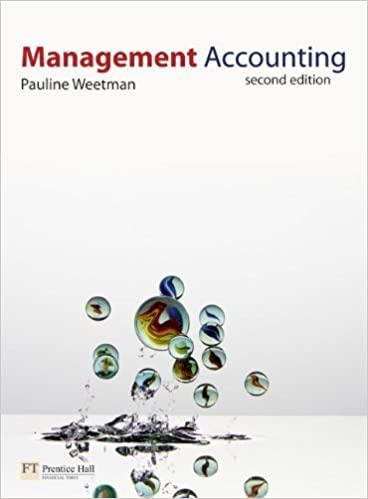The G Group has a divisionalised structure. One of the divisions manufactures engines and one of the
Question:
The G Group has a divisionalised structure. One of the divisions manufactures engines and one of the other divisions assembles motor cycles. The performance of the Divisional Managers, and consequently their bonuses, is based on the return on capital employed (ROCE) of their individual divisions. Both of these divisions operate in highly competitive markets.
Motor Cycle Division A key component in a motor cycle is the engine. Engines are readily available on the open market but the division currently buys 3,600 engines each year internally from the Engines Division for £1,375 per engine. The Manager has just received the following message from the Manager of the Engines Division.
Engine Prices: due to recent cost increases the price per engine will now be £1,600.
On receiving the message, the Manager of the Motor Cycle Division contacted several external manufacturers and found one that would supply the required engines at £1,375 per engine.
However, she has since received a directive from the Managing Director of the Group that states that she must buy the engines internally.
Engines Division Following the recent cost increases, the full absorption cost of a motor cycle engine is £1,450.
This includes £400 for fixed production overheads. This type of motor cycle engine is one of many different engines produced by the division. The Manager of the Engines Division is aware of the competitive external market that he faces and knows that it will be difficult for him to charge external customers more than £1,375 per engine. However, he is also aware that the rising costs will have an impact on his bonus. He is trying to protect his bonus by passing these costs on to the Motor Cycle Division. He is keen to make as much profit as he can from these internal sales because the division is currently working below capacity.
Required:
(a) Calculate the impact on the annual profits of each of the two divisions and the G Group as a whole, of the directive that the engines must be purchased internally for £1,600 per engine instead of from the external supplier.
(b) Write a report to the Managing Director of the Group that explains the disadvantages and behavioural implications of using ROCE as a divisional performance measure. Your answer must be based on the above scenario and include an explanation of ‘responsibility accounting’.
(c) The Engines Division has now developed a new ‘lean burn’ car engine that is sold exclusively to external customers. The production of this engine will utilise the spare capacity of the division and will earn the division a contribution of £40 per machine hour. The demand is so high for the car engines that their production could also use 9,000 machine hours that are currently used to make 1,000 of the motor cycle engines that are transferred to the Motor Cycle Division.
Explain, with supporting calculations, the minimum and maximum transfer prices that could now be charged for the motor cycle engines.
(d) Briefly explain three aims of a transfer pricing system.
Step by Step Answer:






